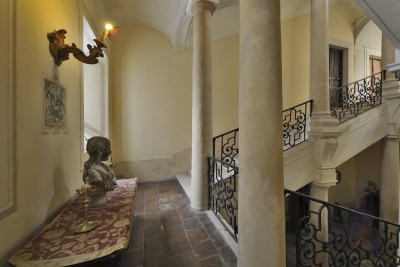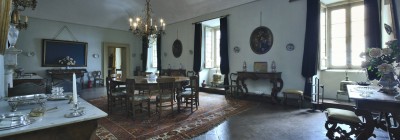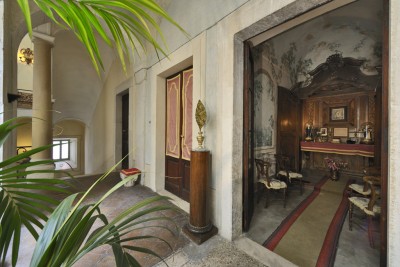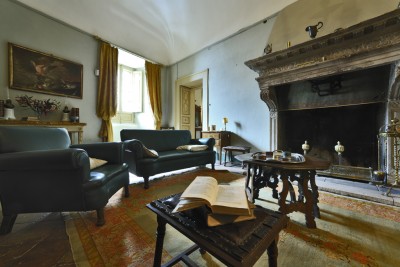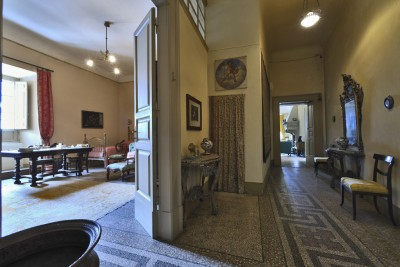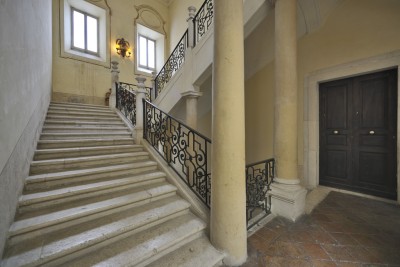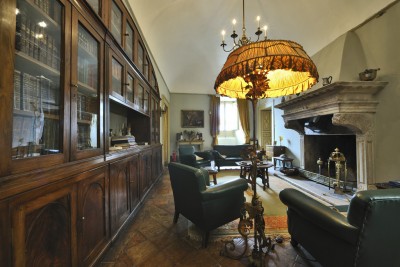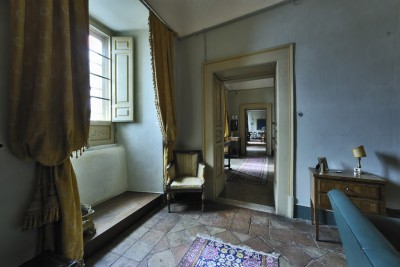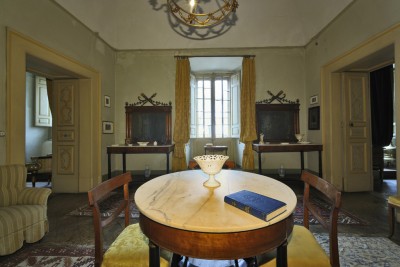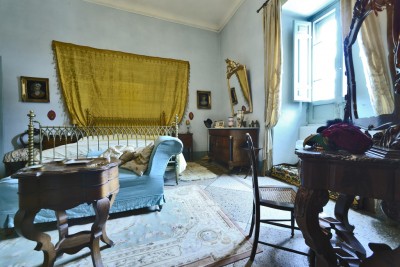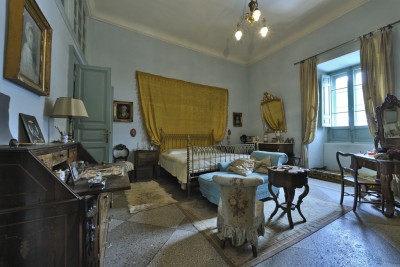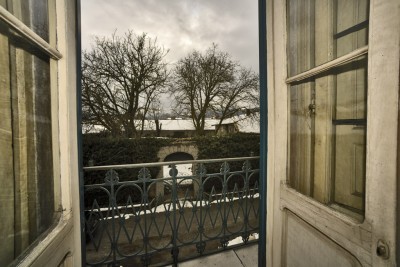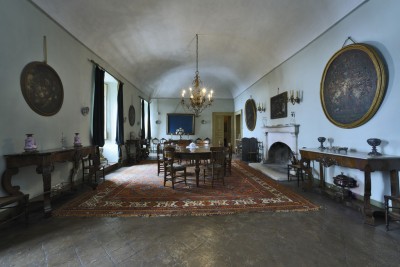Contact the abode
PALAZZO SIPARI IN PESCASSEROLI
Palazzo Sipari is located in the historic centre of Pescasseroli in the heart of the Abruzzo National Park. The building stands on the site of an ancient baronial Palazzo destroyed by fire and took on its present architectural conformation in the late 1830s, at the behest of Pietrantonio Sipari, the grandfather of philosopher Benedetto Croce, who was a prominent figure in Italian intellectual life in the second half of the 19th and the early 20th centuries, and of the Honourable Erminio Sipari, a deputy of the Kingdom of Italy and the founder of the Abruzzo National Park. From 1839, the year in which the renovation work was completed, until 2006, the year of the passing of noblewoman Maria Cristina Sipari, the second daughter of Hon. Erminio Sipari, the Palazzo was permanently inhabited by the Sipari lineage, an emerging family of the new bourgeoisie that took over the economic power and social authority once held by the Massa Barons.
Palazzo Sipari is an excellent example of late Renaissance architectural style embellished with elegant classical forms. Declared ‘of particular artistic and historical interest’ as a testament to the aristocratic architecture of the 18th and 19th centuries, the Palazzo has been listed as a protected building by the Superintendency for Monuments and Cultural Heritage since 1967 due to its significant environmental, artistic and historical value. Two marble plaques on the main façade of the Palazzo commemorate Benedetto Croce and his cousin Erminio Sipari.
An additional plaque was added in November 2013 in commemoration of Marquise Maria Cristina Sipari, who had desired the creation of a ‘casa-museo’ family museum in the Palazzo. The monumental building occupies a floor plan area of approximately 1,000 square metres and comprises three successive floors, in addition to a ground floor of approximately 1,000 square metres. The portal is made of squared stone framed by classical architectural orders, leading to a courtyard that provides access into the Palazzo. The central rooms and those formerly used as the service quarters are on the ground floor, as well as the library with its original wooden structures, which houses the historical archives, bound by the Abruzzo Archival Superintendence Office. The main noble section of the building, where the monumental staircase is located, is situated at the far end of the courtyard on the left.
The rooms where the everyday life of the Sipari family took place are on the first floor. These are now open to the public with a guided tour that also illustrates daily, cultural and hunting habits of the owners. On the completely restored second floor is the room where Benedetto Croce was born. Numerous cultural events organised by the Sipari Foundation have been hosted in these spacious reception rooms since 2007. Adjacent to the Palazzo is the Church of Our Lady of Sorrows, where the remains of several members of the Sipari family are preserved. Today, the house-museum and the Church of the Addolorata are owned by the Erminio and Zel Sipari Onlus Foundation.
THE HISTORY OF PALAZZO SIPARI
Palazzo Sipari stands on the site of an ancient Palazzetto owned by the Massa Barons. Pietrantonio Sipari purchased what remained of the building that had been partially destroyed by a fire from them. From 1839, the year in which the renovation and extension work on the building was completed, the Palazzo was uninterruptedly inhabited by the Sipari family until 2006 and the passing of Marquise Maria Cristina Sipari, the second daughter of Hon. Erminio Sipari and the granddaughter of Pietrantonio. Illustrious figures such as King Vittorio Emanuele III, Duke Amedeo d'Aosta and other members of the Royal Household have been hosted at the Palazzo, while government officials and prominent personalities from the political and cultural world have also stayed here between the end of the 19th century and the early decades of the 20th century. Declared a building of special artistic and historical interest in 1967, it was placed under protection by the Superintendency for Monuments and Cultural Heritage.
In 2009, the Superintendency for Archival Heritage in Abruzzo also placed restrictions on the archives of Engineer Erminio Sipari for the purpose of their preservation, and these are conserved within the Palazzo. The archives contain materials related to the political and professional activities of Engineer Sipari, documentation concerning the Abruzzo National Park, of which he was the founder, as well as a wealth of extensive information related to the family properties.
Two marble plaques on the main façade of the Palazzo commemorate Benedetto Croce and his cousin Erminio Sipari. An additional plaque was added in November 2013 in commemoration of Marquise Maria Cristina Sipari, who had desired the creation of a family museum in the Palazzo. The Erminio and Zel Sipari Onlus Foundation, established at the request of Marquise Maria Cristina Sipari in July 2005, has undertaken a series of initiatives to enhance the building’s heritage. These include guided tours through the interiors of Palazzo Sipari, enabling visitors to retrace the places where the two cousins, Benedetto Croce and Erminio Sipari, saw their destinies intertwine on several occasions. Those visiting can immerse themselves in the atmosphere of those rooms, where the lit fireplaces used to make the living area so intimate and welcoming, and where the family would gather to recount the hunting adventures of their distinguished guests, set in the picturesque area that now comprises the National Park of Abruzzo, Lazio and Molise. The tour concludes with readings from passages written by Benedetto Croce and Erminio Sipari, allowing us to recall the lifestyle and customs of one of the most important families in the Marsica region at the turn of the 19th and 20th centuries.
THE FORESTERIA GUESTHOUSE OF PALAZZO SIPARI FOR A.D.S.I. MEMBERS
Members of A.D.S.I, the Italian Historical Residences Association, can take advantage of the Palazzo's guest accommodation for stays of at least one week at especially favourable rates, enjoying an unforgettable holiday in the Marsica region, far removed from the chaos of the city and in direct contact with nature at its most unspoilt. The charming guesthouse is furnished with antique furniture and features two double bedrooms, a bathroom and a living room.
PLACES OF INTEREST IN THE VICINITY
This historical residence is located within the National Park of Abruzzo, Lazio and Molise.
